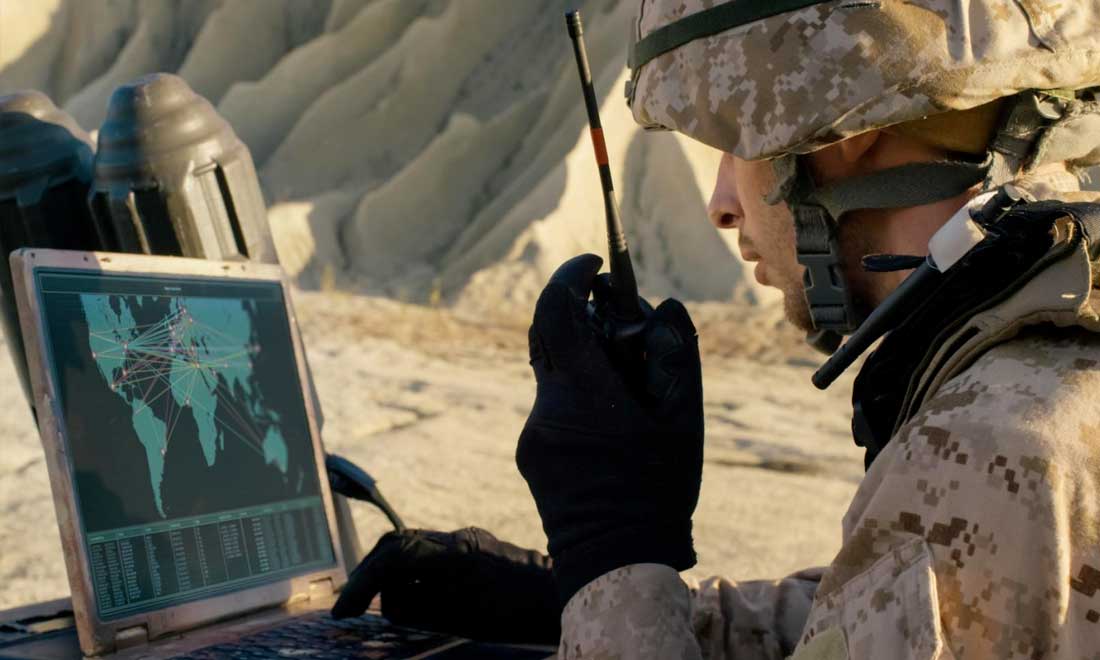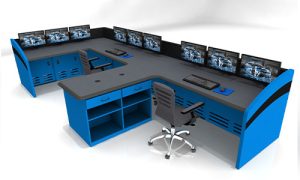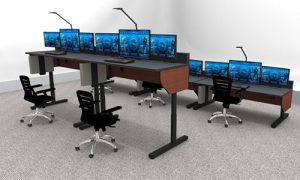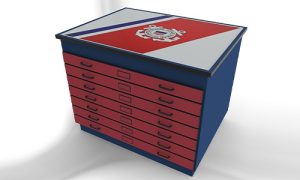Control Room Consoles In The Military And Defense Industry


To construct or design any kind of military facility, the plan must include an advanced control room with state-of-the-art features and amenities. And of course because this command center is unique from other kinds of console spaces, it must include industry-specific furniture and considerations when it comes to the furnishings.
Because of this, when putting together a network operation center in a military facility, you’ll want to make sure you choose the right furniture according to particular specifications. It’s crucial to put the operator’s comfort and alertness at the forefront of the plans, along with how the workflow of the room will circulate related to the operator.
How Should A Military Console Be Designed?
Military command center furniture isn’t like any other kind of furniture you might see in an office environment. (Of course, not every office environment is quite like a command center.) These furnishings will come technologically equipped with amenities and will collaboratively work together to produce a highly efficient, productive, and safe work atmosphere.
The main goal with putting together a military control room is to think of everything working together like a well-oiled machine. The monitors, interfaces, controls, and time-sensitive details should all be easily accessible for those who need them in order to properly do their jobs, and they should all collectively work in tandem together. Customization is also key. Everything in the control room is given great care and attention to detail, so that whether an operator is taking an important call or involved in a covert operation, they have everything they need to get the job done. Every operator’s purpose in the room should be considered.
There are 5 key elements that go into a military console design. Let’s take a look at them more closely.

Fluid Operation Across All Channels
In addition to being a center where communication takes place, the military control room is also a critical space that should be conducive for making important decisions. After all, the military supports secret missions, intensive training, and vital simulations that could be life or death for many people.
Collectively the military command center space, furniture layout, and design should work together swimmingly when it comes to allowing for communication and easy workflow. Additional equipment can be added to streamline this communication even more and includes waveforms, satellite telephones, local area networks (LANS), radio towers, routers, and more.
The Ability To Withstand Attack
It’s no surprise that one of the top specifications for a military control room is the ability to withstand attack. Just as you don’t want a command center within a headquarters of an organization, the military typically has a control room in a second location, usually an alternative that’s not within a war zone. This kind of room can even be in a temporary or backup space, meaning that it has to be put together fast. In addition to customization and mobility, in this case, you might need additional console furniture and alternative design blueprints to accommodate the space and situation.

Built To Last
Going along with survivability, command center furniture should also be built for durability and resilience, as control room operators spend long hours at these desks. Along with being built to last, they should also include ergonomic specifications to add comfort when it comes to sitting for long hours. Also, in order to avoid burnout and on-the-job physical strain, ergonomic furniture can indirectly support office retention. The last thing you want in a command center environment is people making uncomfortable decisions being uncomfortable themselves.
Pliability
Military control room furniture and furnishings should be able to be flexible in their design, meaning they can be moved around and adjusted should situations change. You’ll want to be able to rearrange them in a variety of ways rather than just having one set way to set them up. Since no day is the same in a military control room, no network operation center should have a permanent layout or setup that doesn’t allow for elasticity. This is a good rule of thumb for your military furniture, as well as a rule of thumb for operators working within the military control room: always be ready to change it up according to the situation.
As you can see, there is a lot to consider when it comes to military control room furniture and the layout of the critical space. You’ll want to think about things such as the blueprint and location, furniture that can withstand explosions and danger, furniture design that can support employees spending long hours at their desks, and flexibility when it comes to making adjustments to the command center. It’s clearly not your typical office setup, but for life-or-death decisions being made in this military facility, these office specifications can save the lives of the people inside and outside of the command center.






